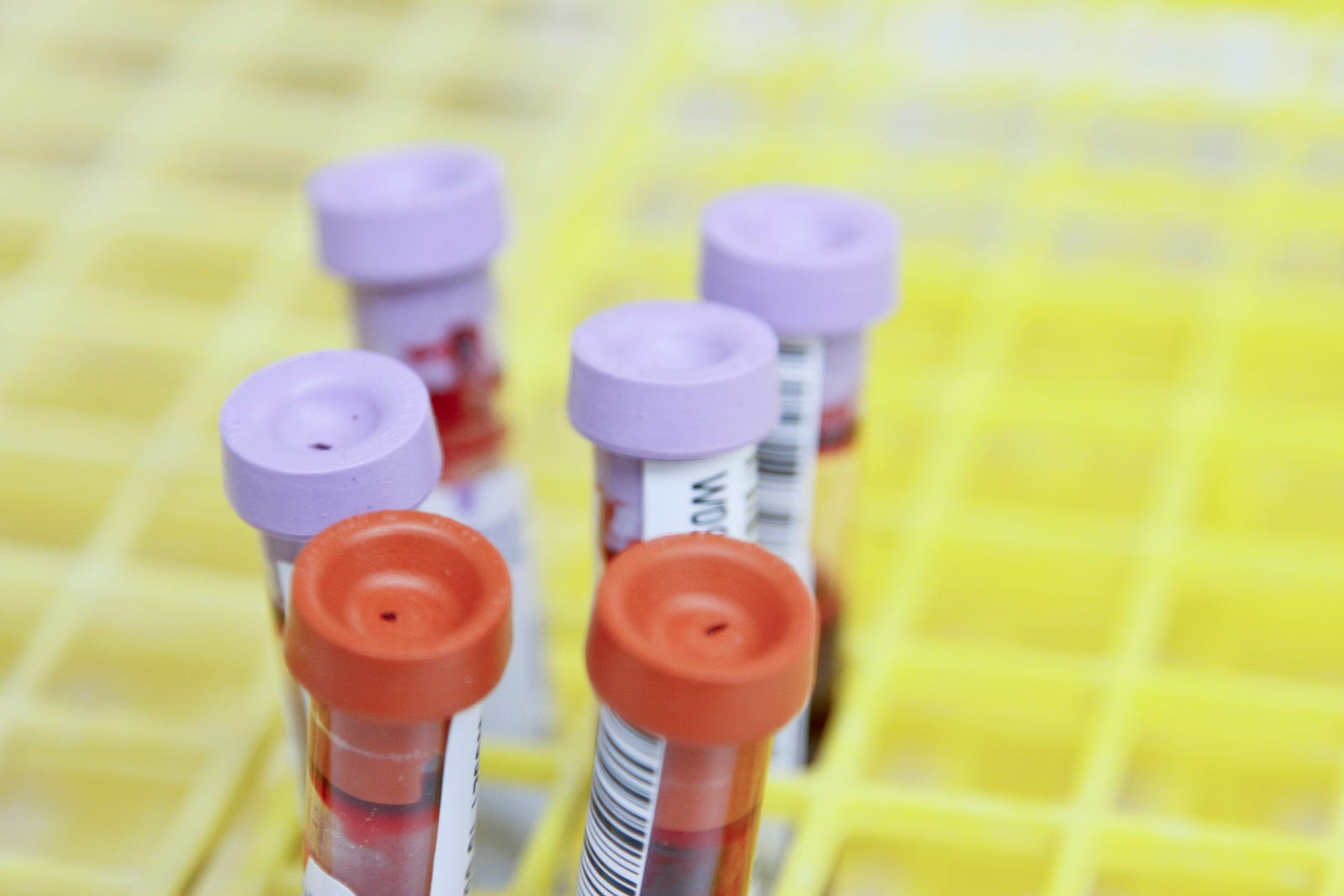RESEARCHERS ARE EXPLORING THE POTENTIAL OF BLOOD TESTS to predict the chance of experiencing a first heart attack. Today we explore a potential new warning test for heart attack.
My father died of a heart attack in his 86th year. You will not be surprised that I have concerns about my cardiovascular health.
In a recent study, scientists pinpointed around 90 molecules that could be early indicators of a cardiac event.
One notable sign is the presence of brain natriuretic peptide, a substance that acts like a natural diuretic.
When the heart is under stress, it may release this peptide to reduce blood volume by increasing urination.
Heart attacks are common.
My father was not alone.
Coronary heart disease (CHD) is the most widespread form of heart disease, causing around 375,476 deaths each year.

In the United States alone, approximately 805,000 people experience a heart attack annually.
Out of these, 605,000 individuals go through their first heart attack, while 200,000 occur in people who have already experienced one before.
One death every 3 minutes and 33 seconds.
The numbers are daunting.

Did you know that the numbers I mentioned translate to one person dying of a heart attack every 3 minutes and 33 seconds in the United States?
Or that one in five deaths in the U.S. is from heart disease? There are about 405 deaths from stroke each day.
But there’s a big problem: Heart attacks typically occur without warning to those who suffer from them.
New study
I am delighted that we have new promise, at least when predicting heart attack risk over the next six months.
A new study from Uppsala University (Sweden) identifies blood biomarkers that may be an early warning system for heart attack.

This “early warning” system may allow time for preventive measures before a first heart attack.
Study details
Researchers examined blood samples from European individuals who had never had heart problems.
They compared the blood of 420 people who had their first heart attack within six months of the study against the blood of 1,598 healthy people.
The study found 91 molecules that could signal an impending heart attack.
The research, published in Nature Cardiovascular Research, identified 91 molecules, with Dr. Johan Sundström noting they could be causes of heart issues or just bystanders, requiring further investigation.

Interestingly, the new tool, similar to a regular checkup blood test, doesn’t use these newly identified molecules.
Dr. Sundström adds that already available markers were just as effective, which is good news because they are commonly used in healthcare.
More study details
Among the 91 molecules studied, the one most consistently linked to an upcoming heart attack is brain natriuretic peptide.
Brain natriuretic peptides are produced by heart muscles when the heart is under a lot of stress.
It’s quite fascinating because the heart, when strained, releases this molecule as a kind of natural remedy to reduce fluid overload, promoting increased urine production.
One more thing – Heart Attack Warning Test
Scientists are also developing a website tool anyone can use if they know their current LDL and HDL cholesterol levels, waist circumference, height, and other basic information.
This tool estimates how likely it is that you might experience your first heart attack in the next six months.
My take – Heart Attack Warning Test
We don’t currently have a method to assess the “imminent” (say, within the next six months) risk of a heart attack, which the study is trying to develop.
Such a test could help identify patients requiring more specific and detailed testing to determine any intervention needed.

This research investigation provides preliminary data.
But when should screening for an impending heart attack begin? Can we compare our risk with an average person of the same age and sex, making a web interface more accessible to the public?
Lp(a)
The tool doesn’t consider Lp(a) levels, a genetic factor linked to heart disease. Clinical trials are underway to develop treatments targeting high Lp(a) levels.
/media/8efd7680b07802502820917c2e73225c
Still, it is a good start for dealing with a leading cause of mortality.
I’ll end with some of my favorite ways I try to drop my risk of suffering from a heart attack or stroke. The U.S. Centers for Disease Control (CDC) endorses these approaches.
1. I choose healthy foods and drinks.
Consuming a substantial amount of foods rich in saturated fat and trans fat may increase the risk of developing heart disease.
I try to incorporate foods that are high in fiber and low in saturated fats, trans fats, and cholesterol, which can be beneficial in preventing elevated cholesterol levels.

I manage my sodium intake by limiting salt in my diet (this approach helps keep my blood pressure low). Additionally, moderating sugar consumption can help regulate blood sugar levels, aiding in the prevention and control of diabetes.
I am mindful of alcohol consumption, with experts recommending no more than two drinks per day for men and one for women to avoid raising blood pressure.
2. I maintain a healthy weight.
People with overweight or obesity have a higher risk for heart disease. Carrying extra weight can put extra stress on the heart and blood vessels.
You can calculate your Body Mass Index (BMI) at the CDC’s Assessing Your Weight website. I admit BMI is imperfect for knowing if your weight is in the optimal range.
3. I move.
Regular physical activity is crucial for my weight management and reduces my blood pressure, cholesterol, and blood sugar levels.

I aim for at least 2 hours and 30 minutes of moderate-intensity weekly exercise, such as brisk walking or bicycling, to promote overall health.
4. I don’t smoke.
(It would be a bad look for a cancer doctor, no?)
5. I check health measures.
Blood pressure? Check. Blood sugar. Good. I go to the doctor periodically.
Thank you for reading “Heart Attack Warning Test.” How do you lower your heart attack risk?




